Oil prices extend losses as traders downplay Russia sanction risks
Introduction & Market Context
Bunge Limited (NYSE:BG) released its second quarter 2025 earnings results on July 30, revealing a continued decline in profitability despite management’s optimistic outlook on strategic initiatives. The company’s shares rose 1.52% to $77.50 in premarket trading, suggesting investors were focusing on the company’s strategic transformation rather than the quarterly performance decline.
The agricultural commodities trader reported adjusted earnings per share of $1.31 for Q2 2025, down 24% from $1.73 in the same period last year, continuing a multi-quarter trend of declining profitability. However, the company maintained its full-year adjusted EPS guidance of approximately $7.75, indicating confidence in its strategic direction despite challenging market conditions.
Quarterly Performance Highlights
Bunge’s financial performance showed mixed results for the quarter ended June 30, 2025. While net income per share on a diluted basis increased significantly to $2.61 from $0.48 in Q2 2024, adjusted net income per share declined to $1.31 from $1.73 in the prior year period.
As shown in the following earnings highlights table, the company experienced declines across most business segments:
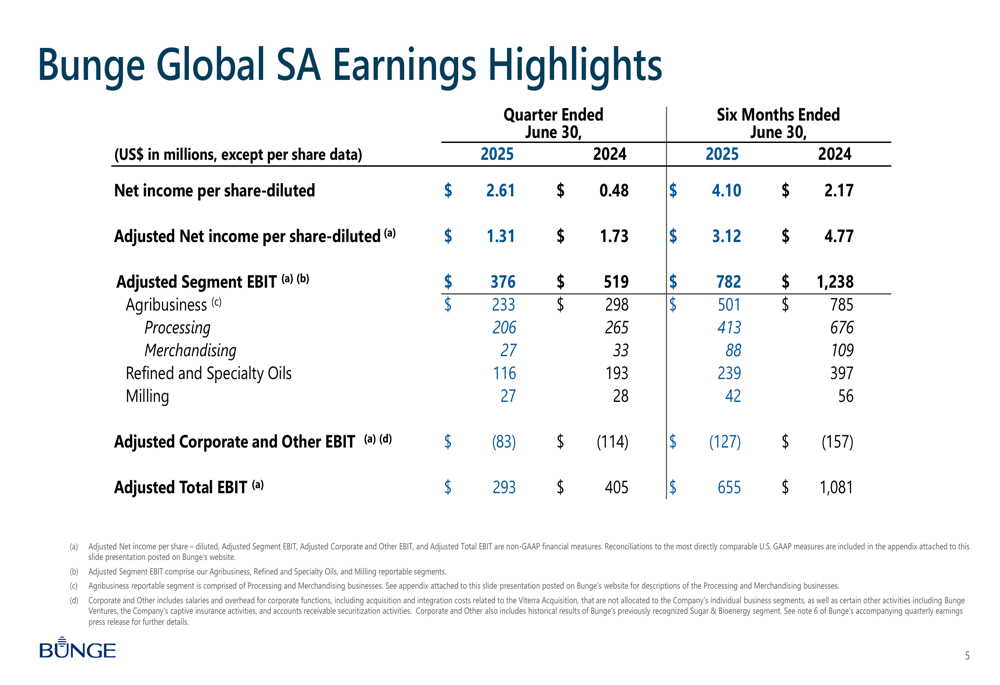
Adjusted Segment EBIT fell to $376 million from $519 million in the same quarter last year, representing a 28% decrease. The Agribusiness segment, which includes processing and merchandising operations, saw EBIT decline to $233 million from $298 million. Refined and Specialty Oils experienced an even steeper drop, with EBIT falling to $116 million from $193 million in Q2 2024.
The company’s volume metrics also showed weakness across segments, with Agribusiness volumes declining to 19,274 thousand metric tons from 20,579 thousand metric tons in the prior year period.
The following chart illustrates the multi-year downward trend in both Adjusted Total (EPA:TTEF) EBIT and Adjusted EPS, which management attributes to a more balanced supply and demand environment as well as trade and biofuel uncertainty:
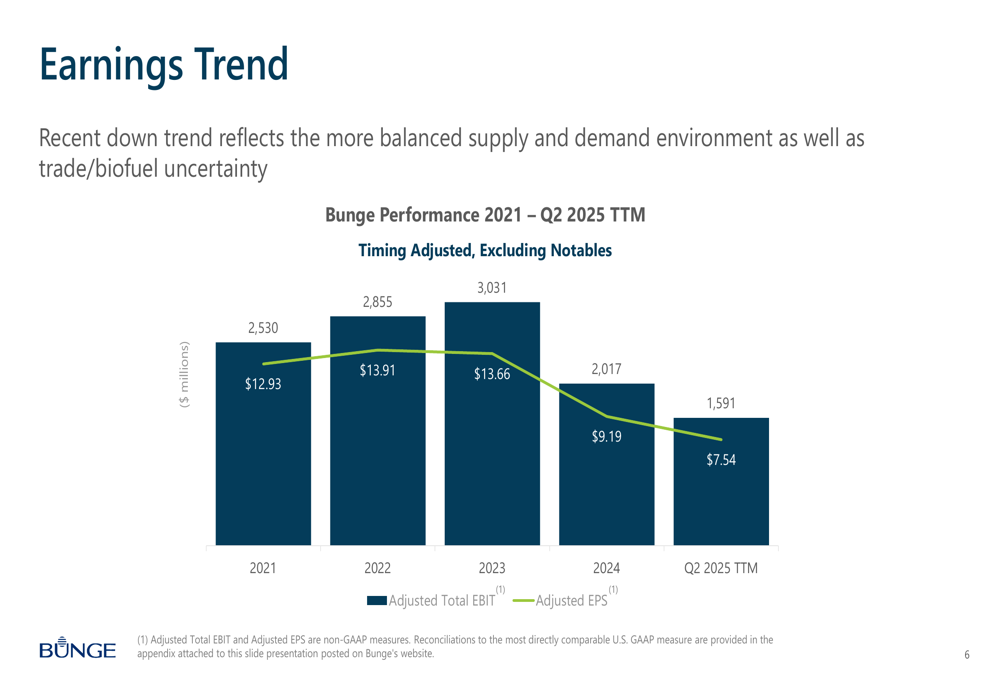
Strategic Initiatives
The most significant development highlighted in Bunge’s presentation was the completion of its combination with Viterra on July 2, 2025. Management described this as creating "the premier agribusiness solutions company" that increases diversification across assets, geographies, and crops while bringing greater market insights.
According to the company’s Q2 highlights slide, the team is "moving quickly to identify commercial opportunities" and "leveraging core aspects of the playbook that has served Bunge well over the past several years":
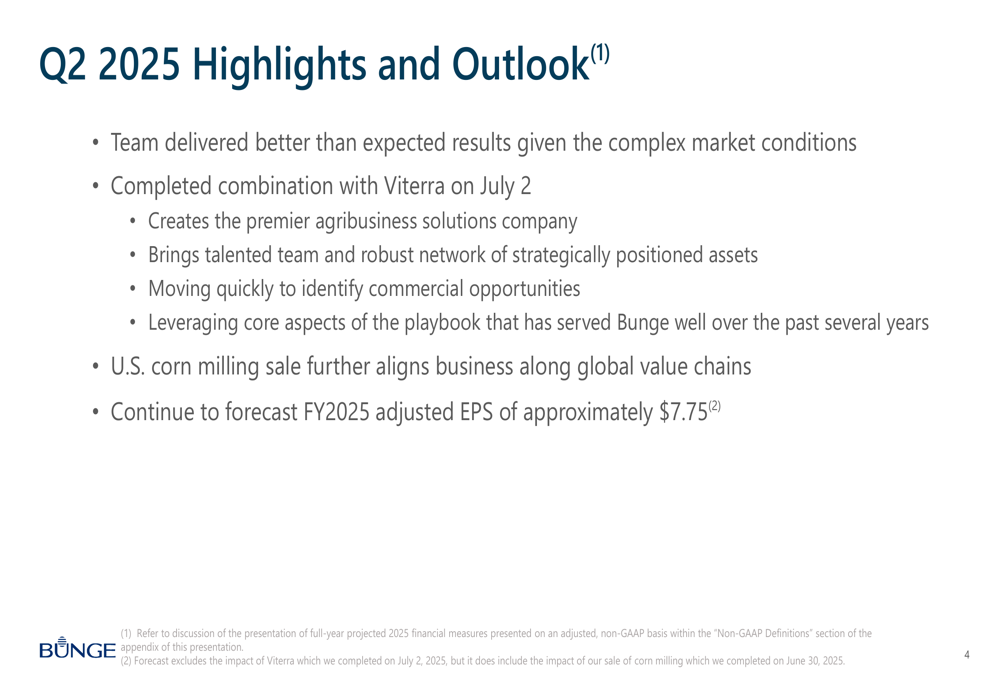
Additionally, Bunge completed the sale of its U.S. corn milling business, which management stated "further aligns business along global value chains." This divestiture appears to be part of the company’s broader strategy to focus on its core global operations and integrate with Viterra’s complementary assets.
In the closing remarks, management emphasized that the Viterra combination accelerates Bunge’s strategy to serve customers at both ends of the agricultural value chain and expressed confidence in the company’s ability to deliver value to all stakeholders.
Financial Position
Despite the earnings pressure, Bunge maintained a strong financial position. The company’s readily marketable inventory (RMI) continued to exceed its net debt, with RMI at $6.7 billion compared to net debt of $4.5 billion at the end of Q2 2025, resulting in a $2.2 billion positive difference.
As illustrated in the following chart, this pattern of RMI exceeding net debt has been consistent over the past several quarters:
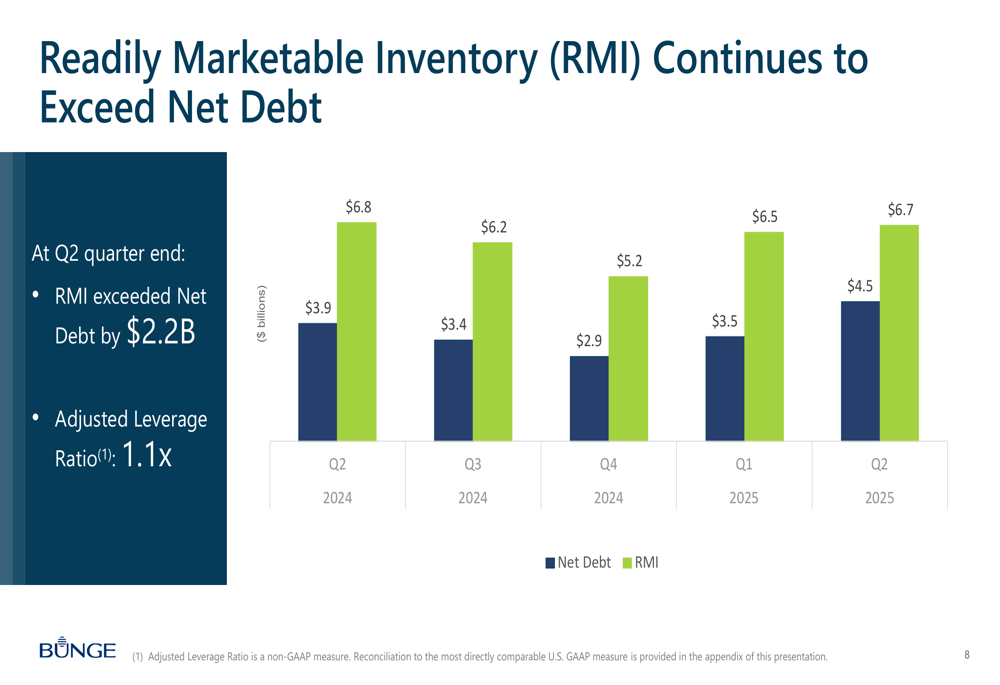
The company’s adjusted leverage ratio stood at 1.1x, indicating a conservative debt position. Bunge also maintained a strong liquidity position with $8.665 billion in credit facility commitments, of which only $1.1 billion was drawn at quarter-end:
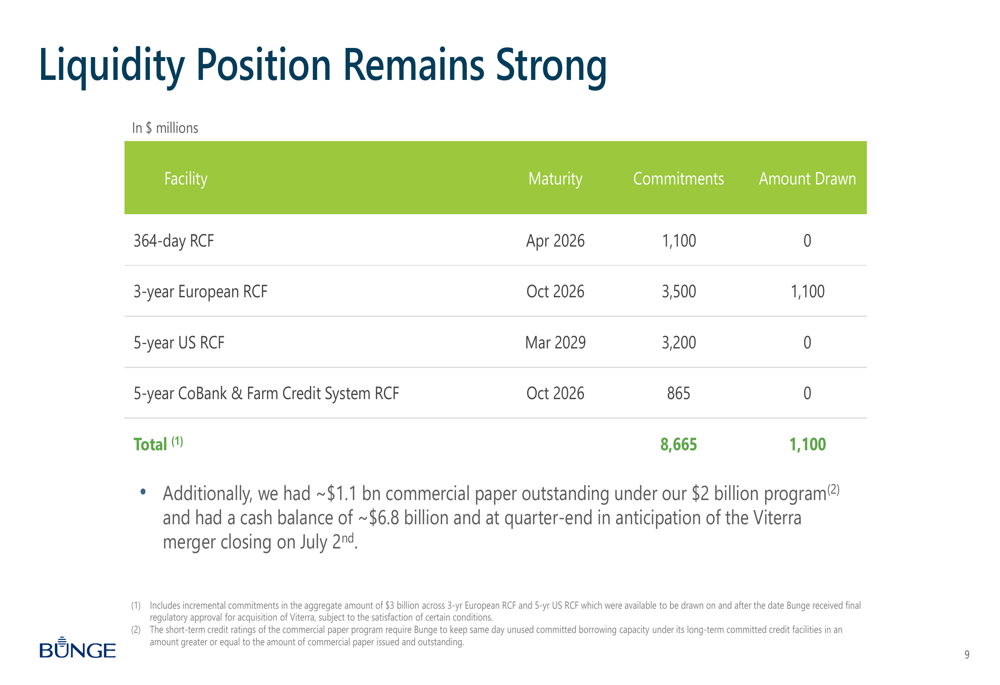
Bunge reported a cash balance of approximately $6.8 billion at quarter-end, which the company noted was in anticipation of the Viterra merger. The company’s capital allocation priorities continue to focus on maintaining strong credit ratings, paying shareholder dividends, pursuing reinvestment opportunities, and conducting share buybacks.
The following waterfall chart illustrates how Bunge is using its cash flow to drive shareholder value:
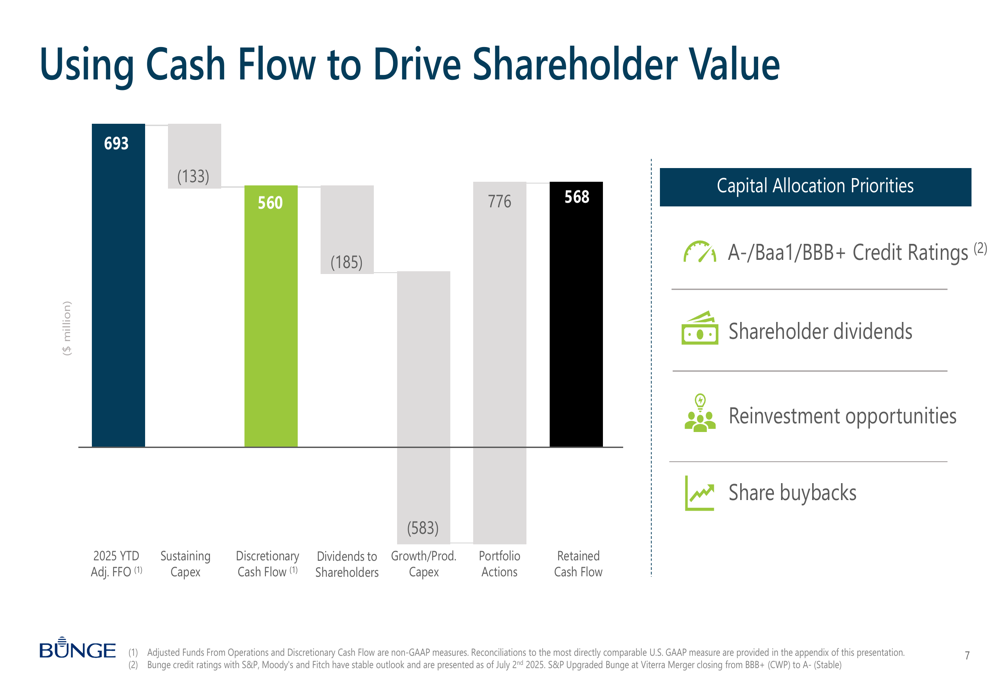
Forward-Looking Statements
Bunge maintained its full-year 2025 adjusted EPS guidance of approximately $7.75, taking into account Q2 results, the current margin and macro environment, and forward curves. The outlook by segment shows mixed expectations compared to 2024:
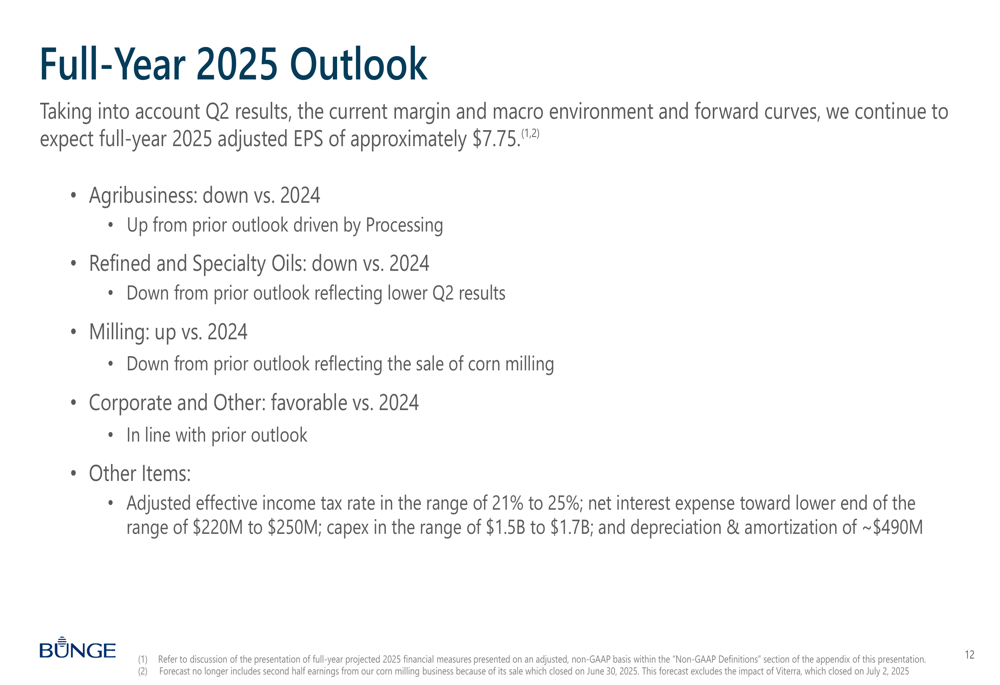
For Agribusiness, the company now expects results to be down versus 2024 but improved from its prior outlook, driven by Processing. Refined and Specialty Oils are projected to be down versus 2024 and lower than previously expected, reflecting the weaker Q2 results. Milling is expected to be up versus 2024 but down from prior outlook due to the sale of the corn milling business.
The company also provided guidance on other financial metrics, including an adjusted effective income tax rate in the range of 21% to 25%, net interest expense toward the lower end of the range of $220 million to $250 million, and capital expenditures in the range of $1.5 billion to $1.7 billion.
The company’s discretionary cash flow, which reflects cash available for growth investments and returns to shareholders, has shown a declining trend since 2021, as illustrated in this chart:
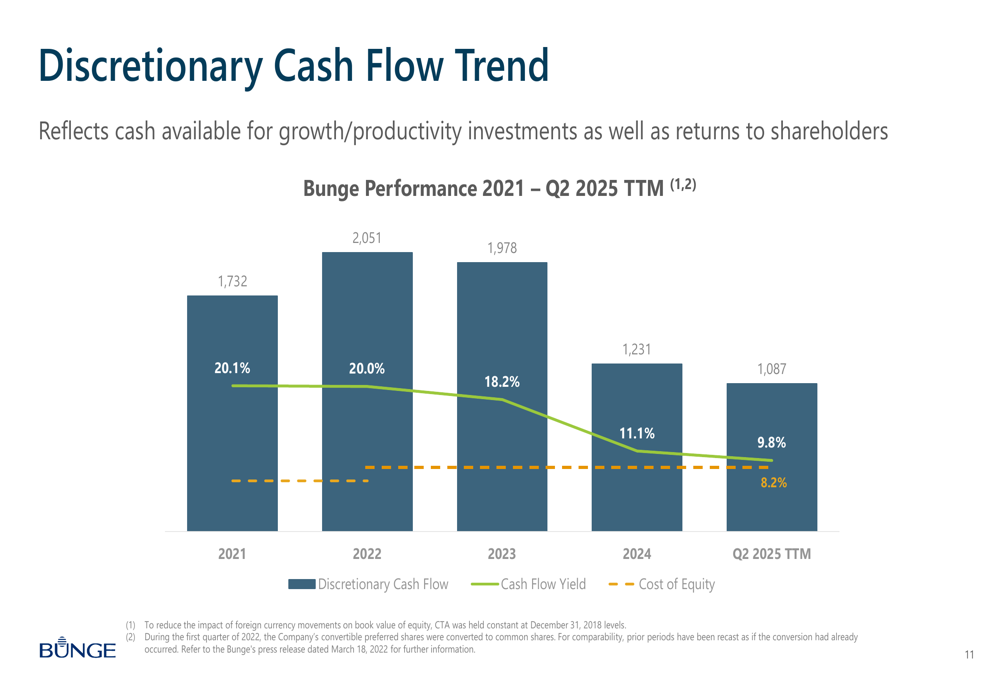
Despite the challenging near-term performance, management remains optimistic about the company’s strategic positioning following the Viterra combination, emphasizing increased diversification, greater market insights, and the ability to leverage scale for more impactful investments.
Full presentation:
This article was generated with the support of AI and reviewed by an editor. For more information see our T&C.
